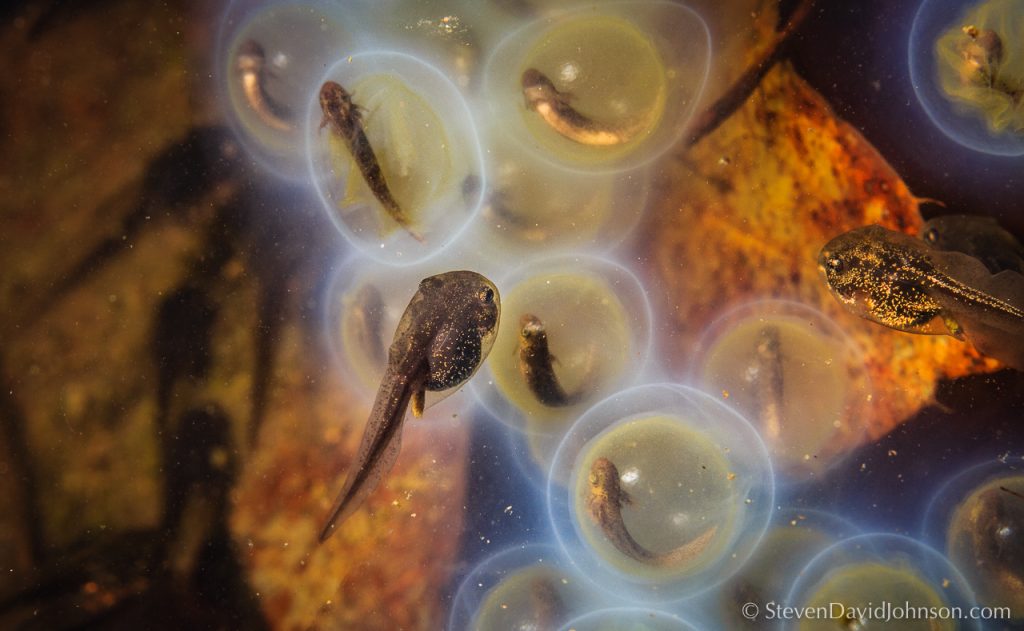Capturing images of tiny underwater creatures is no small feat – but the work has stunning payoff, if you look at the work of Eastern Mennonite University visual and communication arts professor Steven David Johnson.
Johnson’s “Vernal Pools” exhibit opened Friday, Feb. 2, in the Margaret Martin Gehman Gallery and runs until Feb. 16. It features photographs from small seasonal ponds that act as hosts for amphibian and macroinvertebrate breeding events in George Washington National Forest in Virginia.

A soundscape composition of frog calls, created by music professor Ryan Keebaugh, will accompany the exhibit.
Read an Richmond Times-Dispatch article about Steve Johnson’s work.
In one series, a spotted salamander hovers, its legs and wing-like gills extended, its vivid yellow and black eyes curious, almost worried. Accompanying images show eggs, embryo and larva poised in the intimacy of fragile development.
“There’s a remarkable, intricate world of amphibian and macroinvertebrate biodiversity just below the surface of these temporary ponds,” said Johnson. “Because of surface reflections and the tiny scale of the creatures, it’s a world that is difficult to observe without specialized equipment. Using underwater photography and video, I want to help viewers to develop an understanding and appreciation of this hidden, ephemeral environment.”
Johnson’s work has been featured by Orion, BBC Focus Magazine, National Geographic Kids Books, National Science Teachers Association Press books, and numerous conservation journals, among them the publications of Wild Virginia and Virginia Wilderness Committee.
Johnson, an affiliate member of the International League of Conservation Photographers, came to EMU in 2005, and started one of two full-semester conservation photography courses offered to undergraduates in the United States (the other is offered at Stanford University).
In his courses, students not only learn and practice photography skills but also partner with nonprofit organizations that benefit from their work. In 2016, student-produced photography proved vital in documenting at-risk ecosystems in the path of the proposed Atlantic Coast Pipeline.
“After the pipeline company dismissed scientific surveys of the salamander habitat as being outdated, one of our partners pulled out images my students had just made,” Johnson said in an interview with FrogLog, a digital magazine published by the Amphibian Survival Alliance and Amphibian Specialist Group. “This completely changed the tone of the conversation.”
Read more about how EMU student photography has influenced conservation conversations.
Two of Johnson’s students have been selected to the prestigious college scholars program at the North American Nature Photographers Summit. Johnson was a presenter there in 2015 and 2016.

Steve, your work is evocative and inspiring.
Carry on!
Just came from seeing (and hearing) this and it is breath-taking in its beauty and detail.